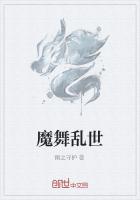Humility① is the best policy for technological forecasters. If you doubt that, remember those confident predictions of 30 years ago about the coming arrival of the “paperless office.”
The arrival of computers everywhere in the workplace would, we were assured, soon make paper a thing of the past.
And what is the result? Paper is still big business. In fact, sales of the stuff are growing. And the biggest beneficiary②, it seems, is Canada, the world’s largest exporter of office printing paper, which more than doubled its exports in the past 15 years─the years of the information technology “revolution.”
Bill Gates’s vision of a computer on every desk has been more or less realized. Yet most of the folks③ working at those desks are knee-deep in paper.
North American office printers alone will print 1.2 trillion sheets each year─an increase of more than 50 percent in the past.
The increasing use of paper is due to the introduction of the very digital technology that was supposed to wipe it out.
The case studies on email in the workplace, for example, show that it can lead to a 40 percent increase in paper consumption─and this doesn’t take into account the amount of paper used to print information from the Internet.
There’s a wonderful irony here, because the personal computer─not to mention the laser④ printer─was invented in a lab set up by a copier company which was worried by all the talk of paperless offices.
Xerox’s core business involved paper, and it was understandably alarmed by the prospect of it going out of fashion. So the research center invented the computing and printer technology that made sure it didn’t. Perhaps those Xerox executives knew what they were doing, after all.
But our attachment to paper is truly amazing. Astonishing proportions of email users, for example, print off their messages and store them all in filing cabinets.
Organizations that used to do massive print runs of documents for meetings now circulate them electronically via their intranets. But those attending the meetings generally turn up with heaps⑤ of paper hot off the nearest laser printer─a process much more resource intensive and less efficient than proper offset printing.
To the technological rationalist⑥ this behavior seems irrational. Why store email messages in paper files, which take up valuable real estate and are effectively unsearchable, when you can keep them on a hard disk and effortlessly look through them for keywords and phrases? Why print off bulky⑦ documents whose only fate is to be shredded⑧ after the meeting is over.
The problem, of course, is that it is the rationalists who are irrational. If people love paper, there must be a reason for it. And there is. It is highly portable⑨, infinitely flexible and embodies very high-resolution display technology, which consumes no battery power. And it doesn’t have to be turned on before you can read it.
Given that, the mystery is not that people use so much paper, but that they don’t use even more of the stuff.
① humilityn. 谦卑,谦逊[U]
② beneficiaryn. 受益人,受惠者
③ folkn. (某一民族,种族或社会阶层中的)广大成员;……人[the S]
④ lasern. 激光[C]
⑤ heapn. (一)堆,堆积[C][(+of)]
⑥ rationalistn. 理性主义者;唯理主义者
⑦ bulkyadj. 体积大的,庞大的;过大的
⑧ shredv. 用碎纸机撕毁(文件)
⑨ portableadj. 便于携带的,手提式的;轻便的
纸的命运
对科技预测人员而言,谦逊是最佳策略。如果你对此有所怀疑,回想一下三十年前,人们预言“无纸办公”即将到来的时候是多么自信吧。
电脑铺天盖地出现在工作场所的各个角落,使我们深信有纸办公即将成为过去。
而结果怎样?纸业仍然是大产业,而且,纸制品的销量一直呈上升趋势。其中最大的受益者似乎是加拿大,这个世界上办公用纸出口量最大的国家,其出口量在过去的十五年里翻了一番,这十五年正是信息技术“革命”的十五年。
比尔·盖茨所预见的办公室内人手一台电脑的情形已基本实现。但是大多数人仍在纸张的重围中办公。
仅在北美洲,每年办公打印就要用去1.2万亿张纸——这一数字比过去增长超过了50%。
用纸量的增加恰恰是由于引进了数字信息技术,而人们原先以为这一技术会淘汰纸张。
以电子邮件为例,个案研究表明办公场所电子邮件的使用能够使纸张的消耗量增加40%——这还不包括从因特网上下载信息所需要的纸张。一家复印机公司对无纸办公的言论忧虑不堪,而个人电脑——先不提激光打印机——却是在其实验室中诞生的,这真是绝妙的讽刺。
施乐公司的核心业务涉及纸张,所以,他们对纸张被淘汰的前景感到恐慌是可以理解的。于是,研究中心发明了计算机印刷技术以确保纸张不会失宠。也许,施乐公司的执行官们还是清楚他们是在做什么的。
但是我们对纸的依恋的确是惊人的。例如,有相当一批电子邮件用户会将邮件打印出来,存放在档案柜中。
过去常复印大量会议资料的机构,如今通过内部互联网进行信息交流。但与会者通常还是会抱着一摞摞刚刚打印,余热未尽的文件出现在会场——这比普通的胶版印刷更浪费资源,更不合算。
对于科技理性主义者来说,这种行为看似荒谬。将电子信息转换成纸张档案保存不仅占用宝贵的空间,而且不便查找。若将信息存入硬盘,即可通过关键词和短语浏览全部内容,不费吹灰之力。明知道会议一结束,大量的文件就面临被销毁的命运,又何必把它们打印出来呢。
当然,问题在于正是这些理性主义者才不理性。既然人们喜爱纸张,肯定是有其原因的,而且原因也的确存在。纸张携带方便,极其柔软,显示高清晰度的排版技术,不费电池,阅读前毋须打开电源。
这样,令人感到不可思议的就不是人们使用那么多的纸张,而是为什么没有再多用些。















